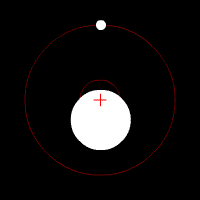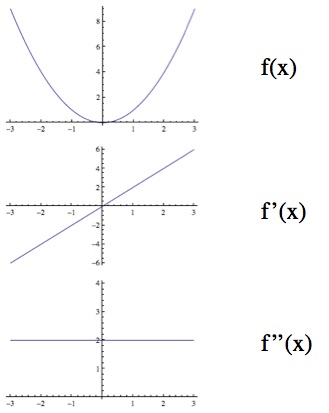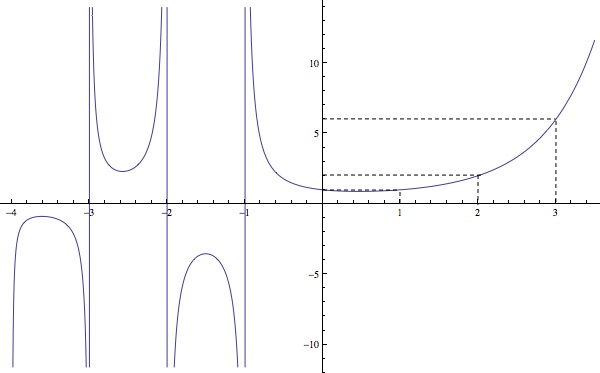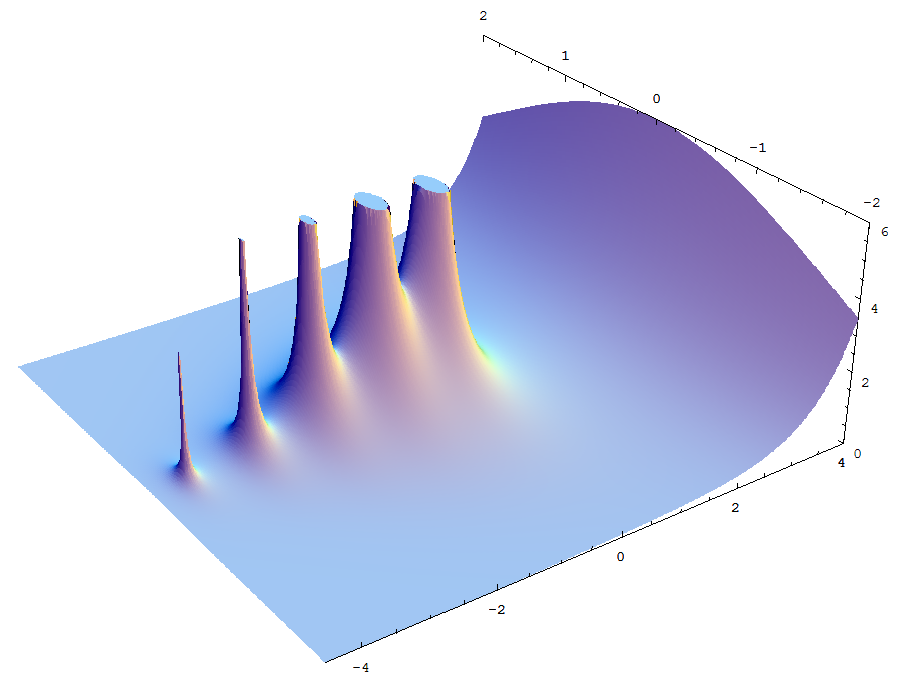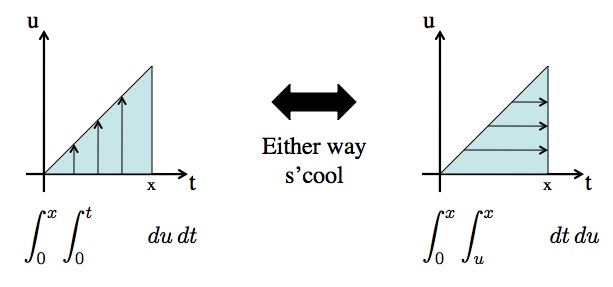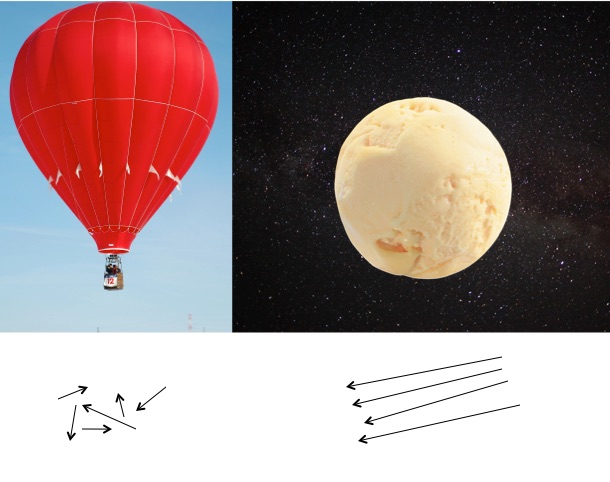Physicist: When you walk around in this big crazy world, there aren’t any immediate reasons to suspect that the ground under your feet is doing anything more than sitting perfectly still (ring of fire notwithstanding). Given that, when you look up at the sky and see things pinwheeling about; why not assume that they’re moving and that you’re sitting still? On its face, geocentrism makes sense.
But there are a lot of physical phenomena that poke holes in it pretty quick. For example, Foucault pendulums (more commonly known as “big pendulums“) swing as though the Earth were turning under them and in a way that exactly corresponds to the way everything in the sky turns overhead (not a coincidence).
The classic way that heliocentrism (the idea that the Sun is at the center of the solar system) is demonstrated to be better that geocentrism (the idea that the Earth is at the center of the solar system) is by looking at the motion of the other planets. This was essentially what Copernicus did; point out that with the Earth at the center the motions of the other planets are crazy, but with the Sun at the center the motion of the planets (including Earth) are simple ellipses. His original argument was essentially just an application of Occam’s razor: simpler is better, so the Sun must be at the center.
Occam’s razor is a great red flag for detecting ad-hoc theories, but it’s not science. With that in mind, it’s impressive how much Copernicus got exactly right. Fortunately, about a century and a half after Copernicus, Newton came along and squared that circle. Newtonian physics says a lot more than “gee wiz, but ellipses are pretty”; it actually describes exactly why all of the orbits behave the way they do with a remarkably simple set of laws for gravity and movement in general. Newtonian physics goes even farther, describing not just the motion of the planets, but also why we don’t directly notice the motion of our own.
If we still assumed that the Earth was sitting still in the universe, physicists would have spent the last couple centuries desperately trying to explain what’s hauling the Sun (and the rest of the planets) around in such huge circles. We’d need a bunch of extra, mysterious forces to explain away why the center of mass in the solar system doesn’t sit still (or move at a uniform speed), but is instead whipping by overhead daily.
What follows is a bunch of Newtonian stuff.
Position and velocity are both entirely subjective, but acceleration is objective. What that physically means that there is absolutely no way, whatsoever, to determine where you are or how fast you’re moving by doing tests of any kind. Sure, you can look around and see other things passing by, but even then you’re only measuring your relative velocity (your velocity relative to whatever you’re looking at). So, hypothetically, if you’re on a big ball of stuff flying through space, you’d never be able to tell. Acceleration on the other hand is easy to measure.

The laws of physics are exactly the same regardless of where you are or how you’re moving. Therefore there is no experiment that can tell you your “true” position or velocity. Acceleration however does change things. That’s why you can juggle in exactly the same way in a place (upper left), a different place (upper right), or even a different speed (lower left), but you can’t juggle, or you have to juggle differently, when accelerating (lower right).
At first blush it would seem as though there’s no way, from here on Earth, to tell the difference between the Earth moving or sitting still. If the Earth is sitting still, we wouldn’t be able to tell. If the Earth is moving, we also wouldn’t be able to tell. But we’re doing more than just moving; we’re moving in circles and as it happens traveling in a circle requires acceleration. The push you feel when you speed up or slow down comes from the exact same source as the push you feel when you turn a corner or spin around: acceleration.
If the Earth were “nailed to space” and never accelerated, then we’d only have one each of the lunar and solar tides. If the Earth never moved, then the Moon’s gravity would pull the oceans toward it and that’s it. But the Earth does move. The Moon is heavy so, even though the Earth doesn’t move nearly as much, the Earth does execute little circles to balance the Moon’s big circles. The Moon’s big circles generate enough centrifugal force to balance the Earth’s pull on it (that’s what an orbit is), and at the same time the Earth’s little circles balance the Moon’s pull on us.
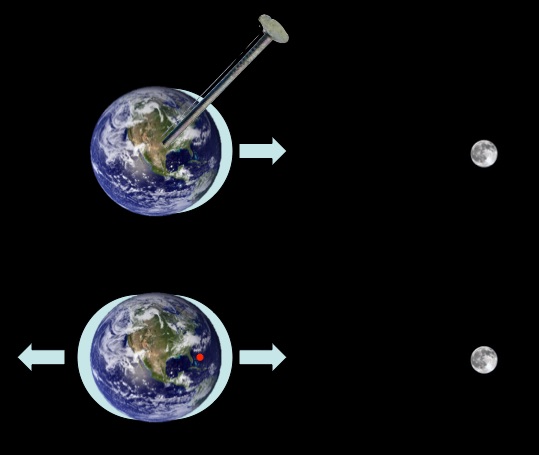
If the Earth were nailed to the sky, then the Moon’s gravity would cause only one tide a day as the seas are pulled toward it. We experience two because the Earth and Moon orbit each other around the same point (red dot). The swinging of the backside of the Earth means that the water on the far side is “flung outward”.
The same basic thing happens between the Earth and the Sun. Things closer to the Sun orbit faster and things farther away orbit slower. But the Earth has to travel as one big block. The side facing the Sun is about 4,000 miles closer, and traveling slower than it would if it were orbiting at that slightly lower level. As a result, the Sun’s gravity “wins” a little in the “noon region” of the Earth and we get a high tide (pulled toward the Sun). The side facing away is moving a little bit faster than something at that distance from the Sun should, so it’s flung outward a little more than it should be and we get another high tide at midnight. These are called the “solar tide” and they’re harder to notice because they’re about half as strong as the lunar (regular) tides. That said, the solar tides are important and they exist because the Earth is traveling in a circle around the Sun.
Long story short: If the Earth were stationary (geocentrism) then we’d have to come up with lots of bizarre excuses to explain why Newton’s laws work perfectly here on the ground, but not at all in space, and we’d only have one solar and lunar tide a day. If the Earth is moving (specifically: around the Sun), then Newton’s simple laws can be applied universally without buckets of caveats and asterisks*, and we get two lunar and solar tides a day.
*or even †’s.

